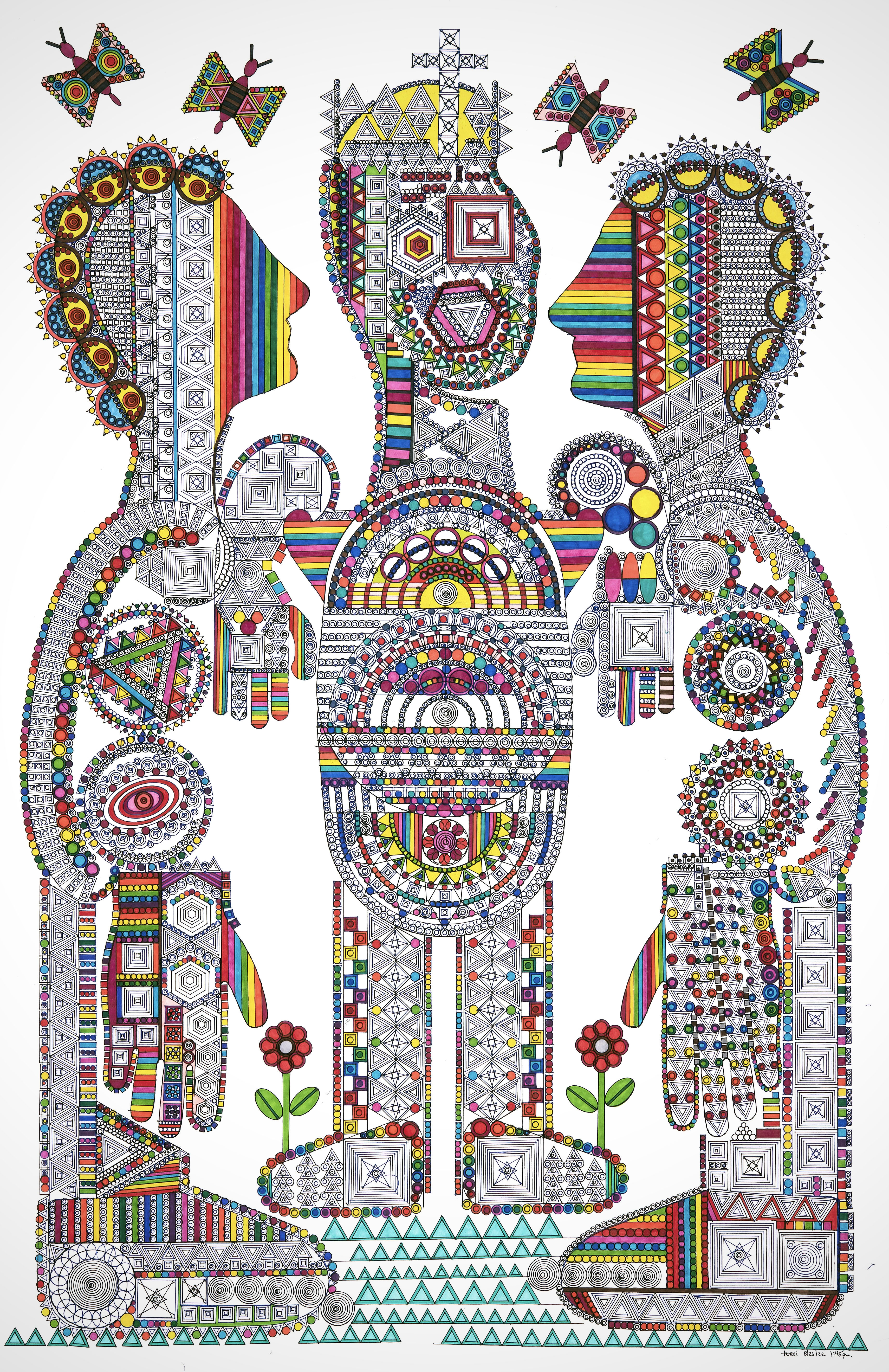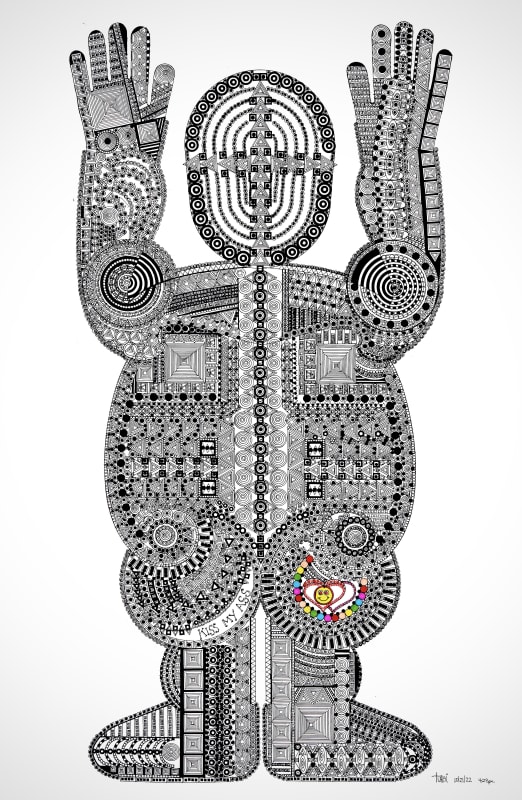John Tursi: New Works
In John Tursi’s New Works at Ricco/Maresca, the artist cultivates a sense of movement and psychedelic animation through dense repetition. Simple shapes are plaited into larger patterns that Tursi combines into machinic bodies. Each figure evokes pulsating Broadyway Boogie-Woogies of movement, that systematize the body into reeling conveyor belts of synapse. Each chain of repetition flows in a stream of consciousness, where irregular monads are repeated until they become dizzying spells of anatomy that condition our vision in the same way that elaborate textiles or Assyrian lamassu can.
Tursi’s bodies are entropic machines, winding chains of simple shapes that imply gravity and movement in their negative spaces. A sphere balanced on a wedge implies its roll and push into the next series, evoking a sense of circular movement within a windup automaton. It is a type of drawing that expands the form of doodling into a chain of attentive capture, where the artist is preoccupied with the current shape and forming it into a causational line of chain reactions. The lines are careful and meditative, but there’s no rehearsal before Tursi tries them on the paper, so each sequence requires a form of repetition that allows flexibility. Each drawing evokes a similar enjoyment of inventive complexity to Charles Dellschau and other artists who harbor in the space of the diagrammatic drawing or pataphysical engineering.

John Tursi, Untitled (1:45pm), 2022. Ink on paper, 40 x 26 in. Courtesy the artist and Ricco/Maresca Gallery.
Tursi’s drawings recall the work of other artists that relate a body-as-circuit—Luboš Plný, Fred Tomaselli, Loïc Lucas, and Glenn Goldberg. The semiotics of the work are elastic. In Untitled (1:45PM) (2022), the three figures form a kind of a trinity or ménage à trois that evokes a karaoke bar of light and figurative procession. The same could be said of Untitled (5:06PM) (2022) where the head of one of the connected figures is a rainbow church, affixed with a centralized cross. This drawing in particular could be an homage to Caravaggio’s The Incredulity of Saint Thomas (ca. 1601–02), as the hands of the figure with the church-steeple head are entering into the side of the other figure, pulled magnetically by a color spectrum in its chest. In these drawings, Tursi seems to be making a connection between psychedelia and the religious experience, creating a closer proximity between communities of organization and the language-virus of spiritual thought. But in Untitled (4:29PM) (2022) the work is missing the quasi-religious, psychedelic tone and instead seems to gesture toward a more harmonic idea of post-humanism. The blue of the ink pen carries through the figure, connecting it by touch to be a part of two birds to complete a single machine of inner thought.
There are also moments that seem to work similarly to Edwin Abbott Abbott’s 1884 novella Flatland: A Romance of Many Dimensions. The world that each image implies could gesture at a political tension, an overdetermined experience brought on by platform capitalism and the repetitive movements of service sector economies. In several works, like Untitled (12:30PM) (2022), the drawing feels like it is a form of compression, and the figure is splayed in such a way to address the edge of the paper to act as much as a mandala as a figure. In this context, Tursi’s optical trickery is more apparent. Not only do the chains of shapes imply directional movement, but they also operate as an optical illusion; they grow and shrink as your eye wanders throughout the drawing. The titling of each piece and their inclusion of specific times mark each drawing as an event, an experience literalized in the flat zone that is more coherent but feels less free.
Tursi draws grooves of movement, where bodies pulsate like pachinko machines and ripple in vibrant hachures. Somewhere within the factory procession or the industry supply line, where the body is suspended into geometrical sequences of endless logistics, there is humor and connectedness too. The bodies become expressions of symbols, as emotions translate into language on an LED ticker. It is a world where our interactions can be easily visualized as colorful responses, where each touch lights up a neon column in the mind, or builds an emotive architecture on the body. It is also a world where each border of the cloisonne offers opportunities to be renavigated, permeated, and inclusive of other technologies of bodies, birds, and symbols.
